Dealerships have been stuck in the 30-day funnel sales model for a long time because it has worked in the competitive field of automotive sales. Today the business is changing and dealerships should look to find a new approach that centers on continuous financial momentum instead of the stop and start nature of the funnel. The new model is called the flywheel. If your dealership is looking to thrive and to stay competitive in the automotive industry’s changing landscape this model is something to take a hard look at and to understand thoroughly and to see how you can apply it to your own dealership.
What is a flywheel, and why is it so important? Jim Collins summarized it the best from the following excerpt in his book “Good to Great.“
Picture a huge, heavy flywheel—a massive metal disk mounted horizontally on an axle, about 30 feet in diameter, 2 feet thick, and weighing about 5,000 pounds. Imagine that your task is to get the flywheel rotating on the axle as fast and long as possible. Pushing with great effort, you get the flywheel to inch forward, moving almost imperceptibly at first. You keep pushing and, after two or three hours of persistent effort, you get the flywheel to complete one entire turn. You keep pushing, and the flywheel begins to move a bit faster, and with continued great effort, you move it around a second rotation. You keep pushing in a consistent direction. Three turns … four … five … six … the flywheel builds up speed … seven … eight … you keep pushing … nine … ten … it builds momentum … eleven … twelve … moving faster with each turn … twenty … thirty … fifty … a hundred. Then, at some point—breakthrough! The momentum of the thing kicks in in your favor, hurling the flywheel forward, turn after turn … whoosh! … its own heavy weight working for you. You’re pushing no harder than during the first rotation, but the flywheel goes faster and faster. Each turn of the flywheel builds upon work done earlier, compounding your investment of effort—a thousand times faster, then ten thousand, then a hundred thousand. The massive heavy disk flies forward with almost unstoppable momentum.
Today we will explore moving from the traditional funnel economics, which are the current core drivers for automotive dealerships nationwide, into a more sustainable flywheel model to drive lasting revenue and move customer loyalty into a continuous state of momentum.
Key differences between the funnel and flywheel model:

Let’s first explain the traditional funnel and the formulas used to measure dealership success. As you can see below shoppers move through a funnel on the road to the automotive sale. Dealerships use this approach to market and measure the dealership employee’s performance. This coupled with the standard linear process workflows built within the dealership’s customer relationship management software drive revenue and has helped the dealership manage expenses against sales.
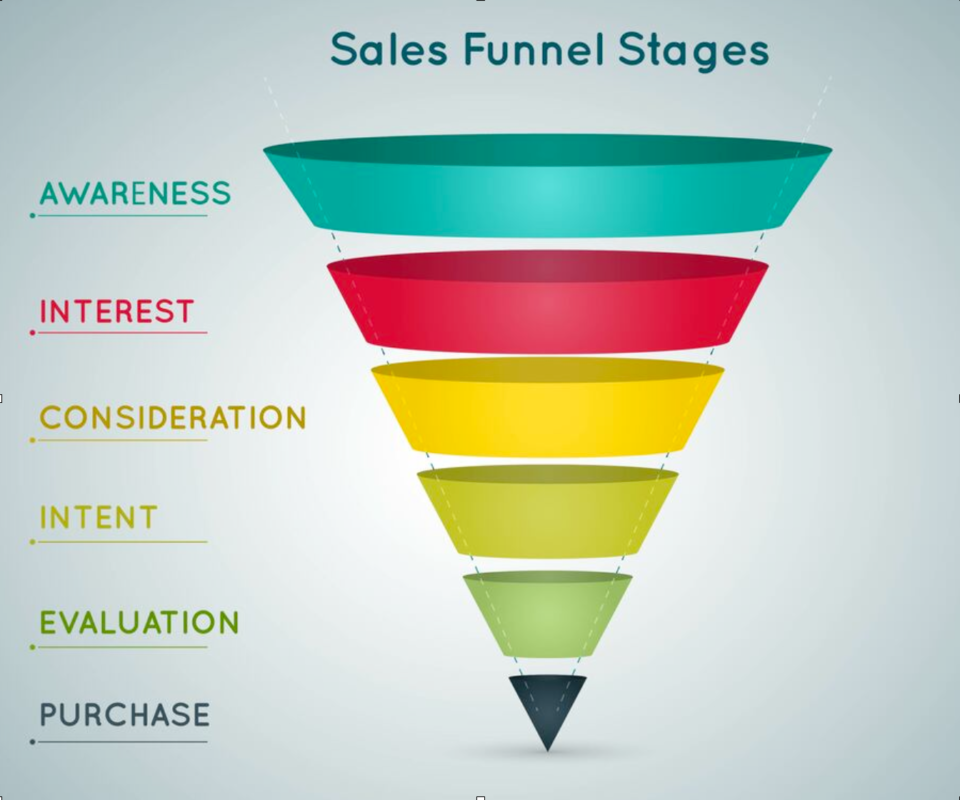
Here is the math that supports this funnel model:
NCfunnel=((TSE+TME) / CPL) x Conv
NC(funnel)= New Customers
TSE= Total Sales Expenditures
TME= Total Marketing Expenditures
CPL= Cost Per Lead
Conv= Conversion Rate (of leads to customers)
This traditional funnel model has been at the center of the dealership’s measurement and employee management for the past 100 years. It is a simple formula that has helped guide dealership financial decision-making. Unfortunately the current automotive industry similar to many industries have undergone massive shifts in both consumer behavior and financial compression yet most dealerships haven’t thought about changing their business approach. Einstein once said, “The definition of insanity is doing the same thing over and over and expecting different results.”
This graph below supports the conclusion that dealerships need to explore new models to reduce the cost of acquiring customers since the dealership (CAC) continues to rise as net revenue per vehicle transacted continues to fall year over year. This highlights that the automotive industry is in an unsustainable situation and new thinking needs to be applied to the business model to survive.
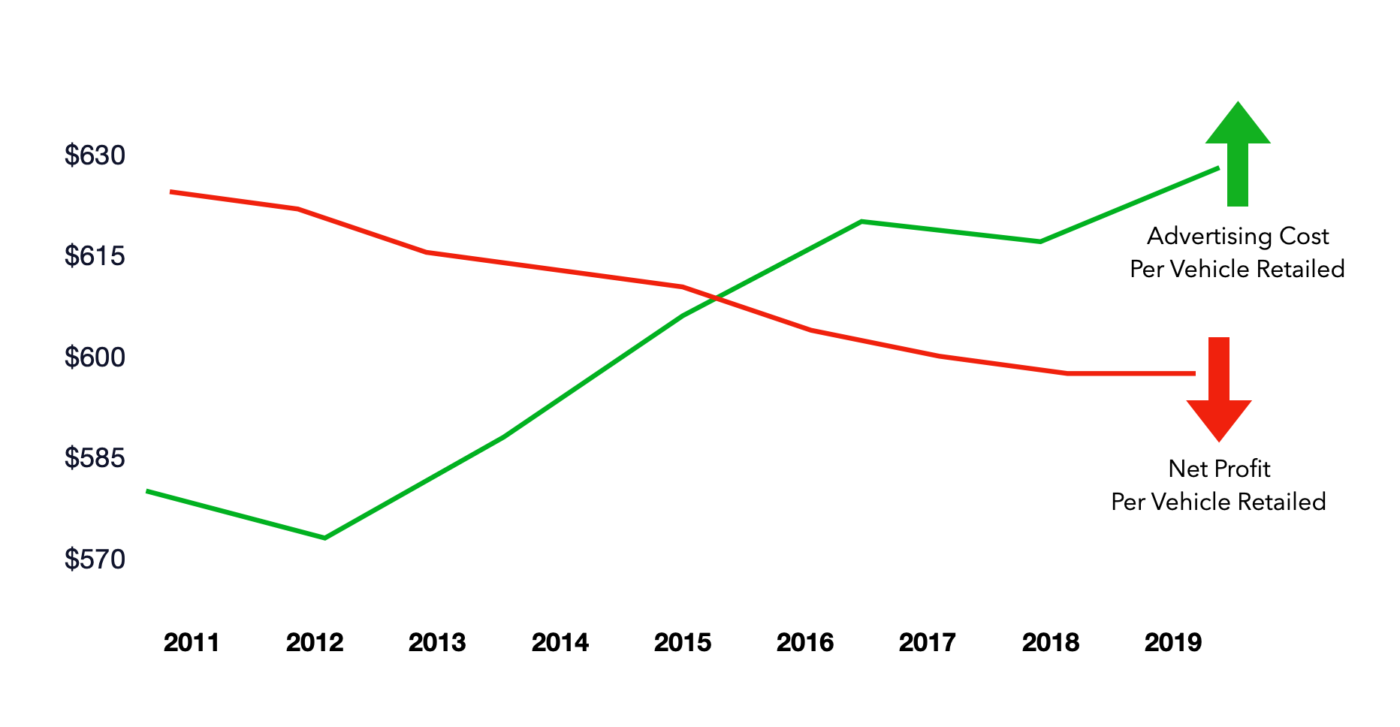
Now let’s move past the traditional sales funnel and explore the flywheel and how it could more effectively serve dealership.
Getting a Flywheel up to speed takes a very focused and systematic approach.
Todd Smith
If implemented correctly moving your dealership to a flywheel can become the growth engine for the dealership, giving the operation sustainability through the flywheel’s momentum. It interlinks strategies, tactics, and processes to accelerate growth with continuous motion.
Let’s take a car as an example here to illustrate the flywheel model. Cars have one primary objective: to transport you. Some may be more stylish, expensive, or powerful, but they do one thing, and every car has four main components: the engine, drivetrain, body, and suspension system. All of these components must work in unison for the vehicle to perform optimally.
Just as in the car, the (Growth Flywheel Framework) has four connected components: Demand Generation, Customer Acquisition, Lifetime Value Optimization, and Retention & Referral.
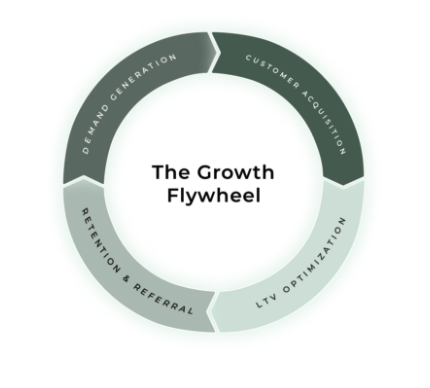
Demand Generation: This is all the dealership’s marketing and advertising initiatives that develop awareness and interest in vehicles and service offerings.
Customer Acquisition: This is the dealership’s sales process to convert potential customers into sales in variable or fixed operations.
These first two parts of the flywheel are relatively straightforward and match existing features of the traditional funnel process that dealerships are accustomed to using.
Lifetime Value Optimization: Strategies and channels that will maximize the monetary value of every existing customer of the dealership.
Retention & Referral: These are initiatives within the dealership to keep customers and help them to become advocates for the dealership. Together retention and referral measure the momentum for the flywheel.
The automotive dealership flywheel and momentum can be incredibly powerful.
“Once you fully grasp how to create a flywheel momentum in your particular circumstance and apply that understanding with creative intensity and relentless discipline, you get the power of strategic compounding. New underestimate the power of momentum, especially when it compounds over a very long time.”
Jim Collins
Lifetime value optimization and retention and referral are the key areas within the funnel that dealerships just aren’t grasping to the level needed to create the financial momentum offered from the flywheel. One of the best factors to realigning the dealership in these key areas is to leverage existing customer’s insights beyond the standard CSI or Net Promoter Score (NPS).
A new way to gain a more in-depth insight into your dealership’s long-term financial success can be uncovered by understanding your customer satisfaction which can be revealed using a k-factor measurement.
What is the k-factor?
The k-factor is an action-based measurement of happiness and much better of a scoring system than (NPS) Net Promotor Score to gauge your dealership’s future success. Simply put, it is the measure of your customer’s ability and willingness to attract another customer to your dealership. One way to understand this is to think about it, as the k-factor will measure your dealership’s organic growth rate.
This concept is borrowed from the medical field to understand how viruses are spread. It is instrumental in understanding your dealership’s organic growth potential. Think of this as your dealership’s ability to grow through referrals / (WOM) organically.
k = (i)(c)
i = number of referrals sent by each customer
c = conversion rate of each referral to a customer
https://calendly.com/360converge/30min?month=2021-03This article will spare you the mathematical formulas needed to apply this to your own dealership business. If you want more information on creating and implementing this type of mathematical formula to your dealership, please reach out on our website.
Dealerships spend very little time focusing on how their existing customers can help grow the dealership business instead most dealerships are squarely focused on acquiring new customers and servicing the existing ones, making the business model far less efficient than possible.
An additional bonus of boosting the dealership’s k-factor is that a happy customer will decrease customer acquisition costs and reduce long-term customer retention costs.
A happy customer will have a profound effect on the dealership. Happy customers take up less time and resources. Plus, let’s not forget that happy customers also have a higher probability of repurchasing, which ultimately increases their lifetime value (LTV).
Amazingly, few dealerships are measuring their YOY internally generated growth as it relates to existing customer LTV and the financial impact it has organizationally and instead just focused on the sales numbers.
Here is the flywheel with all four aspects filled in to complete the customer experience.
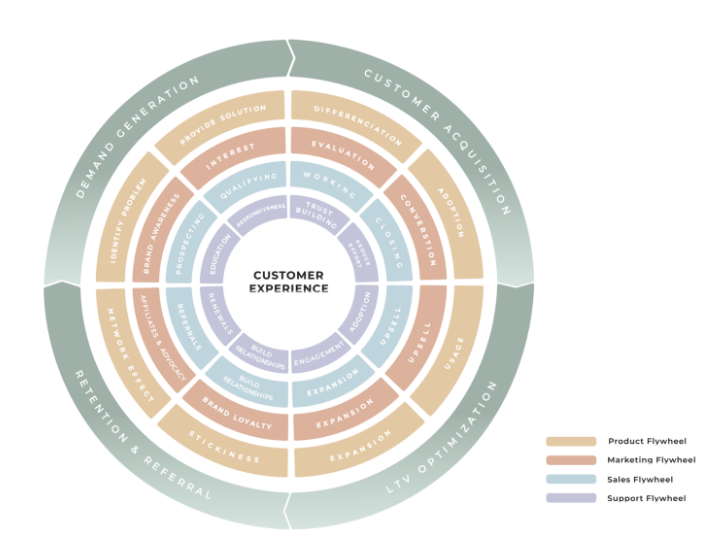
As you begin to holistically view your dealership operationally through the lens of a flywheel we have assembled a few questions to ponder as you think about how your dealership can operate and how you can apply the mechanic of an automotive dealership flywheel versus the traditional sales funnel at your dealership.
Product:
Is your dealership worth talking about?
Create an experience at your dealership that engages shoppers throughout the continuous journey with your brand is crucial to create a competitive advantage in automotive retailing.
Marketing:
Does your marketing align with the sales and service experience you are delivering at the dealership?
Use marketing to communicate and set the right expectations with your automotive shoppers of exactly how the process works invoking trust through transparency.
Sales:
Are your sales operations consumer-centric, helping customers get what they need?
Many dealership processes are focused internally designed solely with the benefits of the dealership in mind. Flip this thinking and realign the dealership processes that put the consumer’s needs at the center of each facet of the experience.
Support:
Have you built an efficient consumer support and relationship management system?
Dealerships need to be ruthlessly focused on reducing the customer’s effort to get the most value from every interaction with the dealership. Also, dealerships need to ensure consistent processes deliver impactful moments throughout the customer’s organizational journey.
Moving your dealership into a flywheel model will help drive growth momentum that is self-sustaining which will reduce operating costs. Here is a potential dealership framework example.
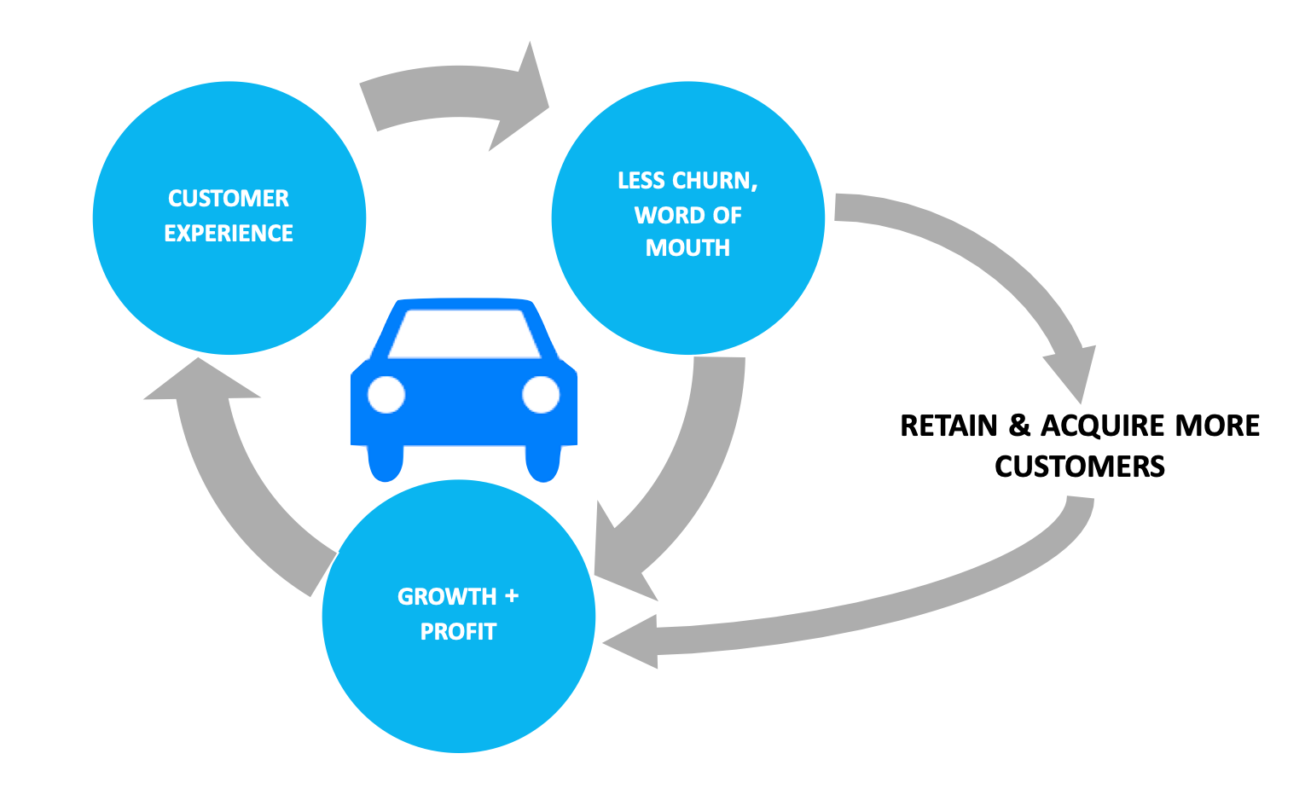
Creating an automotive dealership flywheel can dramatically change every aspect of your dealership’s focus. Especially the focus on the retention and expansion revenue opportunities within your dealership.
There is incredible value within the dealerships existing database through targeted personalized communication. Dealerships like every business in the past have been limited by their availability of human capital (employees) and their ability to engage customers.
We now live in a world where technology can be leveraged to create personalized communication at scale handling hundred of different conversational workflow while delivering a 1-to-1 experience for every dealership customer across multiple communication channels.
Now is the best time to seize the opportunity to build an organizational automotive dealership flywheel that spins to deliver consistent growing revenue not only from newly acquired customers but also through the internal growth of the people who have already done business with your store.

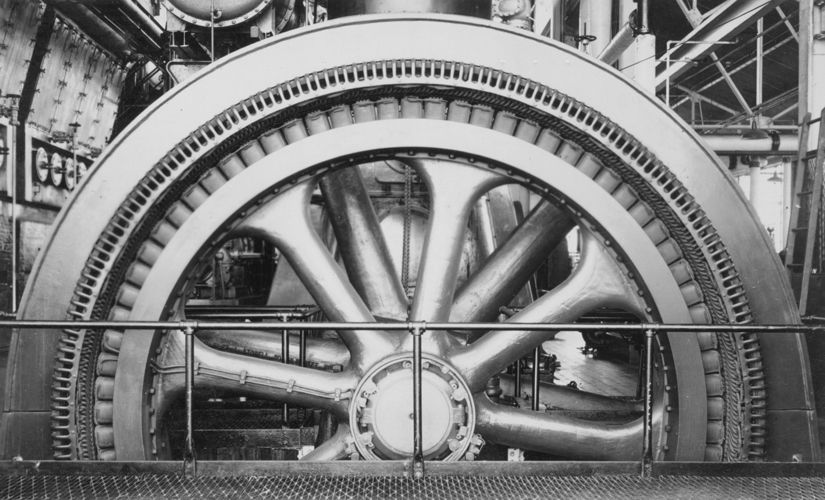




Join 55,000 of your automotive peers. Subscribe to the automotive technology newsletter.
Every Sunday evening we’ll send you a roundup of the best content and events from 360Converge and around the automotive industry. Make sure you’re ready for the week! Subscribe now.
Subscribe here